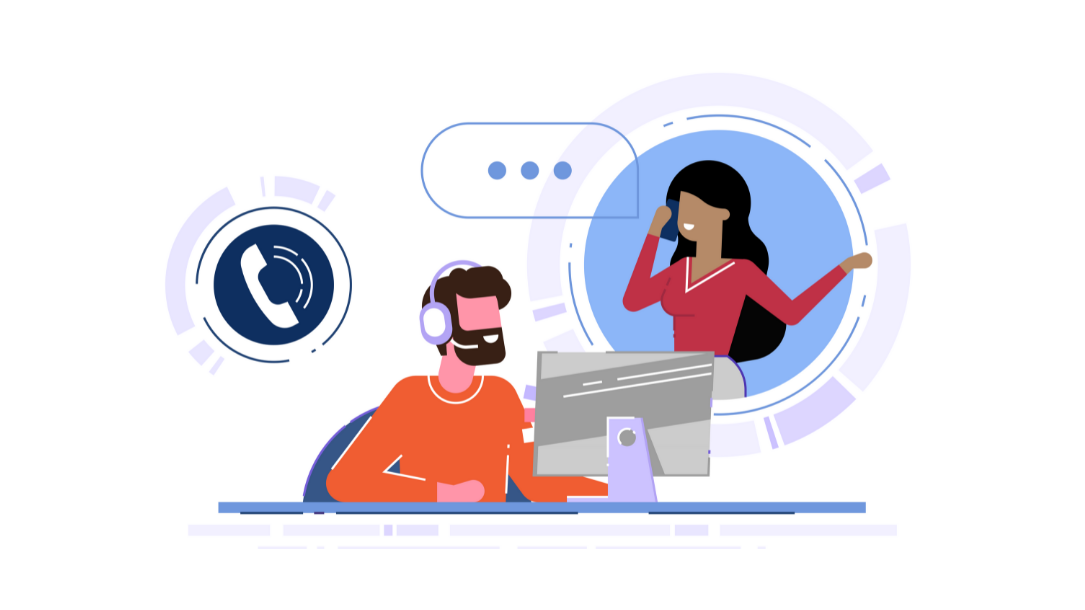Looking for better ways to support your customers over the phone? Telephone interpretation offers a path forward.
With the help of over-the-phone interpretation (OPI), you can connect your multilingual customers to interpreters in the field, from healthcare and government agencies to technology and insurance companies—and every industry in between.
Telephone interpretation for multilingual customers should open, not close, doors for your call center operations. When you’re implementing OPI language solutions, you need to watch out for the most common pitfalls call centers encounter. After all, quality issues like the four discussed in this article can lead to higher dissatisfaction rates that send customers packing.
1. Technical Issues
All too often, call centers get overrun by technical issues. Muffled audio, choppy connections, and dropped calls frustrate customers and representatives alike.
For customers, this can mean calling back multiple times to get even simple issues resolved. From the rep’s point of view, the same quality issues lengthen resolution times and lower customer satisfaction rates. For multilingual call centers, all of these problems become amplified because of language barriers.
There are some things you can do to set customers and representatives up for success.
- Implement a user-friendly interface that customers can easily navigate.
- Invest in quality equipment so when customers do need live support, your call center ensures a clear and reliable connection.
- Create specialized support teams so you can route callers to the appropriate service team without delay.
- Implement OPI solutions on mobile and web so getting in touch is as easy as a few clicks from anywhere in the world.
2. Poor Quality Assurance
When callers receive misinformation from a representative or are unable to resolve their issue during a first call, they may begin to lose faith in a company’s support services. Without this quality assurance, customers will grow impatient and call times will increase. Over time, a company’s reputation and profitability can suffer.
Stay on top of your call center’s quality assurance by keeping tabs on a few key metrics:
- Average speed of answering (ASA)
- Average handling time (AHT)
- First-call resolution (FCR)
- Hold times
- Call volume
- Customer satisfaction score (CSAT)
Multilingual callers’ needs are twofold: They require quality professional support from a company’s representatives, but they also rely on quality linguistic support from interpreters. The key is to integrate remote OPI solutions so you can be sure that the language solutions you’re providing are high quality, efficient, and cost efficient.
3. Inefficient Telephone Interpretation Solutions
Call centers move fast, and OPI solutions have to keep pace. When audio quality lags or multilingual customers wait on the line to be connected with an interpreter, the customer experience suffers. This decreases a call center’s call volume capacity and leads to longer average handling times.
The easiest solution is to prioritize the order in which an interpreter is connected to a customer. Rather than re-routing multilingual customers from an English-speaking representative to the appropriate interpreter, call centers can leverage the technology of automated call menus to get multinational callers the support they need the first time around.
In 2021, ULG launched its new First-Touch Language program to provide equitable access to healthcare for those with limited English proficiency. With the help of ULG’s Community Engagement Program, organizations are learning how to provide culturally appropriate service to engage more consumers.
4. Lack of Cost-Effectiveness and Time-Saving Measures
Companies of all sizes wonder how they can keep up with the demand of their call centers without wasting resources, time, and money. Without experience running multilingual call centers, organizations run the risk of going over budget or creating longer customer wait times.
Finding the right language solutions partner can show you how to access translation and interpretation services without stretching your business too thin. Choose a language solution partner that prioritizes technical support, quality assurance, efficiency, and low-cost/high-value implementation.
ULG has exactly the tools you’re looking for to get your call center off the ground. We connect your callers with skilled interpreters in a matter of seconds. With 24/7 assistance in over 200 languages, your callers can be sure they’ll get the help they’re looking for the first time around. Plus, ULG provides support for TTY/TDD communication.
Interested in improving language access at your call center? To learn more about ULG’s success with OPI, check out ULG’s case study detailing how we helped the largest welfare provider in the U.S. with OPI service in over 200 languages.


